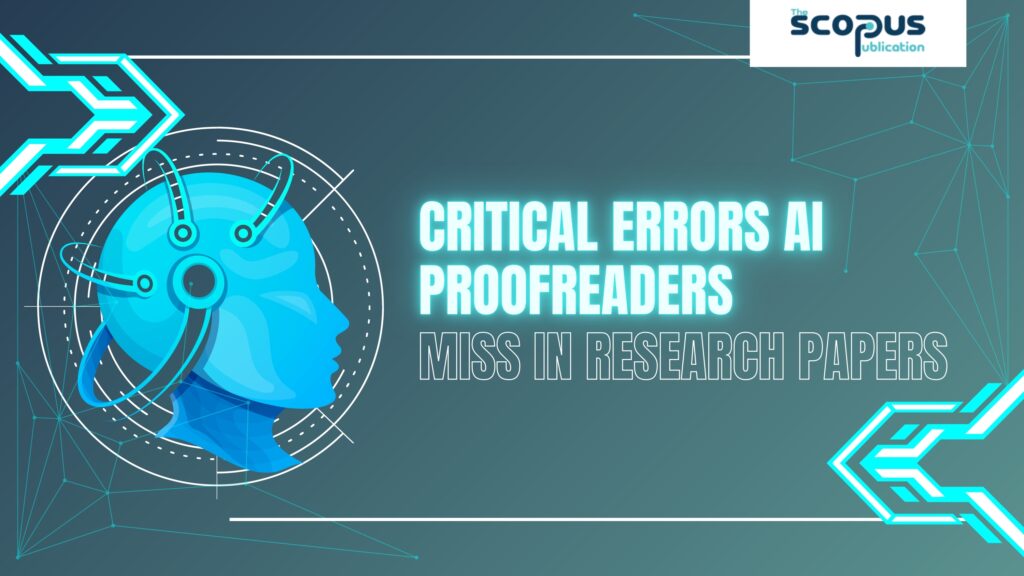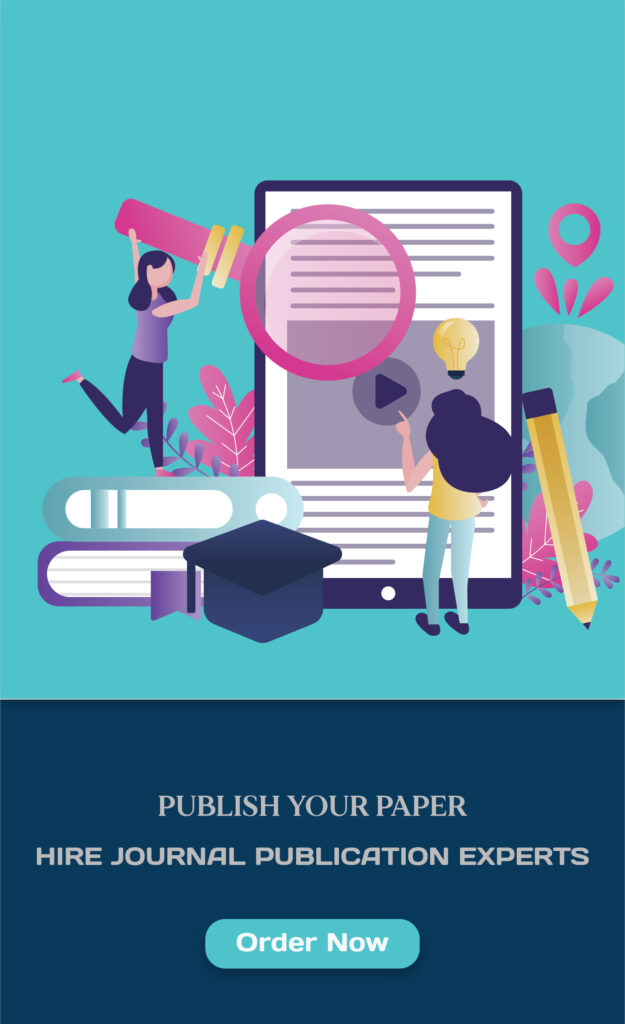AI proofreaders have become the must-have solution for researchers, students and academic professionals. They provide quick and easy grammar corrections and some of them also say that they make texts clearer and have better sentence structure. However, if you can’t check your research paper completely without AI, it can lead to critical errors. In certain situations, the mistakes might be huge enough to ruin your reputation, and as a result, you may miss the chances of journal publication.
In this blog, we will explore the major limitations of AI proofreaders, what they often miss in academic writing, and why human experts are still necessary especially for tasks like scientific proofreading, PhD proofreading and journal publication assistance.
What Are AI Proofreaders?
AI proofreaders are AI based tools that help with correcting mistakes in writing such as grammar, punctuation, spelling and in some cases the flow of sentences. Some of the more common ones are Grammarly, Quillbot and those which are based on ChatGPT. They are useful when you need to have a brief check or for a basic draft. But with regard to research papers, they are not enough.
Why AI Proofreaders Aren’t Foolproof
AI has intelligence, but many times it never works perfectly. Here is why:
- AI-powered tools follow general rules of English, not field specific language.
- They do not fully understand academic tone and context.
- They struggle with complex sentence structures that are common in research.
- They can’t verify the facts or check the logic of your argument.
Basically, AI can make your words polished but not your scientific accuracy.
1. Subject-Specific Terms Get Misunderstood
Most research papers are filled with jargon, scientific formulas and words related to the subject being studied. AI proofreaders frequently recognize these as “mistakes” and attempt to change them in an unclear way.
Example:
A student of biology could put it this way:
“Expression of miR-21 was notably increased in carcinoma cells.”
An AI could substitute this with:
“Expression of mirror-21 was notably increased in cancer cells.”
Not only is it wrong but it also changes the scientific meaning. At this stage you need a human expert to proofread your scientific writing. A proofreader is trained and won’t try to correct information that isn’t wrong.
2. Misjudging Academic Tone
Academic writing should be formal, meaning it avoids casual expressions and keeps things straightforward. Sometimes, AI proofreaders make the text less formal or harder to understand than it should be.
AI suggestion:
“Furthermore, our findings kinda show an improvement…”
This informal tone is not suitable for journals, yet some AI tools may not flag it or may even suggest it as “engaging.”
With journal publication assistance human proofreaders make sure your tone matches the standards expected by top journals.
3. Context-Based Errors Are Missed
AI tools do not yet understand your sentence or argument at the same depth as humans. An AI tool may attempt to fix a sentence that is “incorrect” from a grammatical standpoint but without understanding whether it fits your research goals.
Original sentence:
“While the results are statistically significant, they do not support the hypothesis.”
AI may suggest:
“While the results are statistically significant, they support the hypothesis.”
Grammatically fine—but logically incorrect.
This type of adjustment can completely change your results. A human PhD proofreader can help by fixing your text or leaving your work unchanged.
4. References and Citations Are Ignored
The majority of AI proofreaders do not address citations or references well, nor do they handle APA, MLA or Chicago formatting correctly. They also can’t verify if a citation is used correctly.
For journal publication you need to format your references correctly. Small errors can lead to rejection. Human experts make sure every reference is correctly placed and styled according to the guidelines.
5. Redundant or Wordy Sentences Go Unnoticed
Sometimes, AI tools can’t detect similarly worded phrases. However some tools incorrectly use unnecessary words to make sentences appear more graceful.
Example:
Original: “The data show a clear trend.”
AI suggestion: “The data clearly and obviously show a very clear trend.”
This type of redundancy weakens your writing. Human editors remove these issues to make sure the text is concise, something that is expected in advanced PhD work.
6. Plagiarism Risks with AI Rewriting
Certain researchers rely on AI to rewrite or paraphrase text. While this may seem like a time saver but it often results in accidental plagiarism. AI does not understand how to paraphrase with the academic integrity.
Science proofreading requires an individual to reform written text ethically, they make sure that neither the original words nor the original meaning are lost.
7. Wrong Use Of Passive or Active Voice
AI proofreaders often suggest using active voice (like “We did the test”) in place of passive voice (like “The test was done”). But in research papers passive voice is usually better because it keeps the focus on the experiment or process, not on the person doing it. AI doesn’t always understand this rule which can lead to the wrong writing style for your paper.
Example:
AI might suggest:
“We observed the reaction at 40°C.”
Instead of:
“The reaction was observed at 40°C.”
In many fields the passive form is more acceptable and commonly used. A professional offering journal publication assistance will know when to use which type of voice based on your subject area.
8. Overlooking the Figures, Tables and Captions
AI software is not designed to check or correct figures, tables or their captions. Such elements are frequently important and must be written clearly and accurately. Getting a term wrong in a figure caption or putting the wrong unit of measurement can destroy your credibility.
Human proofreaders examine all these features closely so that your document remains accurate and easy to understand throughout.
Human Proofreaders Still Matter–Here is Why
Even with the advancement of AI technology, people still prefer checking academic papers manually, as a human’s proofreading is still the benchmark. Specialists providing services of PhD proofreading and scientific proofreading understand your field, your paper’s objectives and the expectations of the top journals.
They offer:
- Language polishing
- Clarity improvement
- Formatting and referencing
- Structural guidance
- Feedback on logic and consistency
If your goal is journal publication relying on AI is risky. Get expert journal publication assistance to improve your chances of acceptance.
Final Thoughts
An AI proofreader can check your draft for errors, but it is best to get a human editor for more detailed writing assignments, especially in academic and research writing.
They miss critical errors that can affect how your work is understood and received. From misinterpreting terminology to applying the wrong tone these tools still lack the human judgment that your research needs.
Do not send your research paper, thesis or journal article until you have had it checked by a qualified expert. It might help your work get accepted instead of being rejected.
Need Help With Your Research Paper?
At The Scopus Publications we offer expert scientific proofreading, PhD proofreading and full journal publication assistance. Our experienced editors make sure that your research meets the highest academic standards. Let us help you get published with confidence…


